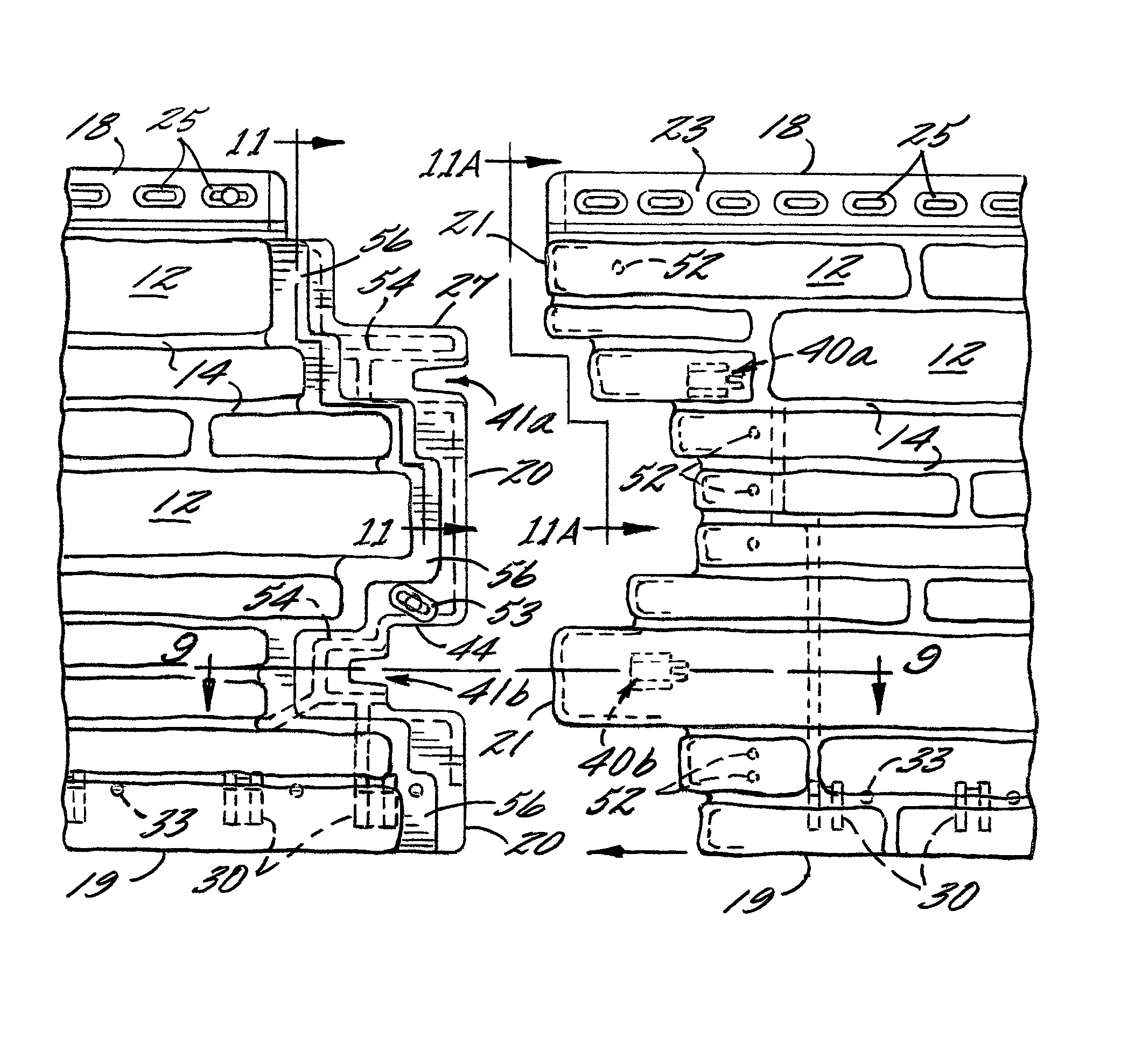Simulated masonry wall panel with improved interlock system
a technology of interlocking system and simulated masonry wall, which is applied in the direction of roof covering, covering/lining, building components, etc., can solve the problems of affecting the precision of the panels, affecting the accuracy of the panels, and requiring a large amount of tim
- Summary
- Abstract
- Description
- Claims
- Application Information
AI Technical Summary
Benefits of technology
Problems solved by technology
Method used
Image
Examples
Embodiment Construction
[0029]Referring now more particularly to the drawings, there is shown an illustrative wall covering 10 comprising a plurality of panels 11 in accordance with the invention. The panels 11, which preferably are molded of thermoplastic material, are formed with a simulated stone and mortar design, typical of hand-laid stone masonry. The simulated stone 12 in this case is generally disposed in a plurality of parallel horizontal rows with the stones 12 being isolated from each other by simulated lines of mortar 14. The stones 12 protrude outwardly of the mortar lines 14, typical of hand-laid stone, and some of the simulated stones 12 in this instance have a width (i.e. a vertical dimension as viewed in FIG. 1), greater than other of the stones in the row. The simulated stone 12 has irregular outer surfaces consistent with natural stone, and the mortar lines 14 also have a waving, or undulating, non-planar naturally appearing outer surface configuration. While the invention has particular...
PUM
 Login to View More
Login to View More Abstract
Description
Claims
Application Information
 Login to View More
Login to View More - R&D
- Intellectual Property
- Life Sciences
- Materials
- Tech Scout
- Unparalleled Data Quality
- Higher Quality Content
- 60% Fewer Hallucinations
Browse by: Latest US Patents, China's latest patents, Technical Efficacy Thesaurus, Application Domain, Technology Topic, Popular Technical Reports.
© 2025 PatSnap. All rights reserved.Legal|Privacy policy|Modern Slavery Act Transparency Statement|Sitemap|About US| Contact US: help@patsnap.com



